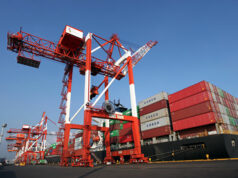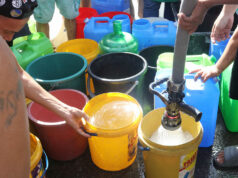Lenders use nearly P45B in MSME loans as alternative reserve compliance
MORE than 100 banks have utilized their loans to small businesses and large enterprises as alternative reserve compliance during the pandemic, according to Bangko Sentral ng Pilipinas Governor Benjamin E. Diokno.
“Latest data show that around P44.2 billion in MSME (micro- small-, and medium-sized enterprises) loans were used as compliance with the reserve requirement, a significant increase from the P9.9 billion in MSME loans used by 55 banks immediately after the effectivity of the measure,” he said in an online briefing on Thursday.
Mr. Diokno said around 88 banks have availed of the regulatory relief measure, most of which were rural banks.
In April, the Monetary Board through Circular No. 1083 allowed lending to MSMEs as alternative reserve compliance in a bid to encourage banks to boost lending to the struggling sector amid the crisis.
Meanwhile, take-up rate of alternative reserve compliance in the form of lending to large enterprises has been limited, Mr. Diokno said, citing that it is relatively recent as it only took effect in late May.
“Only 14 banks have utilized P534-million loans to qualified large enterprises as an alternative mode of compliance with the reserve requirement,” Mr. Diokno said.
Circular No. 1087 signed by Mr. Diokno in late May extended the alternative reserve compliance provided in Circular No. 1083 to count lending to large enterprises that are directly and adversely impacted by the pandemic as part of alternate reserve compliance. The regulatory relief measure will be available to banks until end-2022.
Mr. Diokno said recent feedback from the banking industry include a request to extend the period for availment of regulatory relief measures during the crisis.
“Overall, the BSP needs to assess the impact of the pandemic on the performance of the banking system and the extent of financial relief measures needed,” he said.
“A better understanding of the true state of health of the banking system will allow us to properly evaluate whether further easing of the relief measures is warranted,” he added.
BSP Managing Director for Policy and Specialized Supervision Lyn I. Javier said banks are specifically looking for extensions on operational relief measures granted during the enhanced community quarantine, including non-submission of certain prudential reports, notification for temporary closure of branches, among others.
Amid the crisis, the BSP rolled out regulatory relief measures for lenders including raising the single borrowers’ limit for big banks to 30% from 25%, reduced penalty imposition for reserve deficiencies, and lower credit risk weight for credit to MSME, among others.
SOURED LOANS
Meanwhile, the central bank is mindful of a likely increase in soured loans due to the crisis.
“The aftermath of COVID-19 may exert pressure to the current quality of bank loan portfolio but this will not go as high as the Asian Financial Crisis level,” he said, noting that bad loan ratio ranged from 3.4% at the first half of 1997 when the crisis started and peaked at 17.6% in 2002.
In June, Mr. Diokno said nonperforming loan ratio of banks inched up to 2.3% as of April from 2.2% as of March and the 2% seen in December last year.
The local banking industry has an overall capital adequacy ratio of 15.4% and 16.4% on stand-alone and consolidated bases, well above the 10% minimum requirement set by the central bank.



